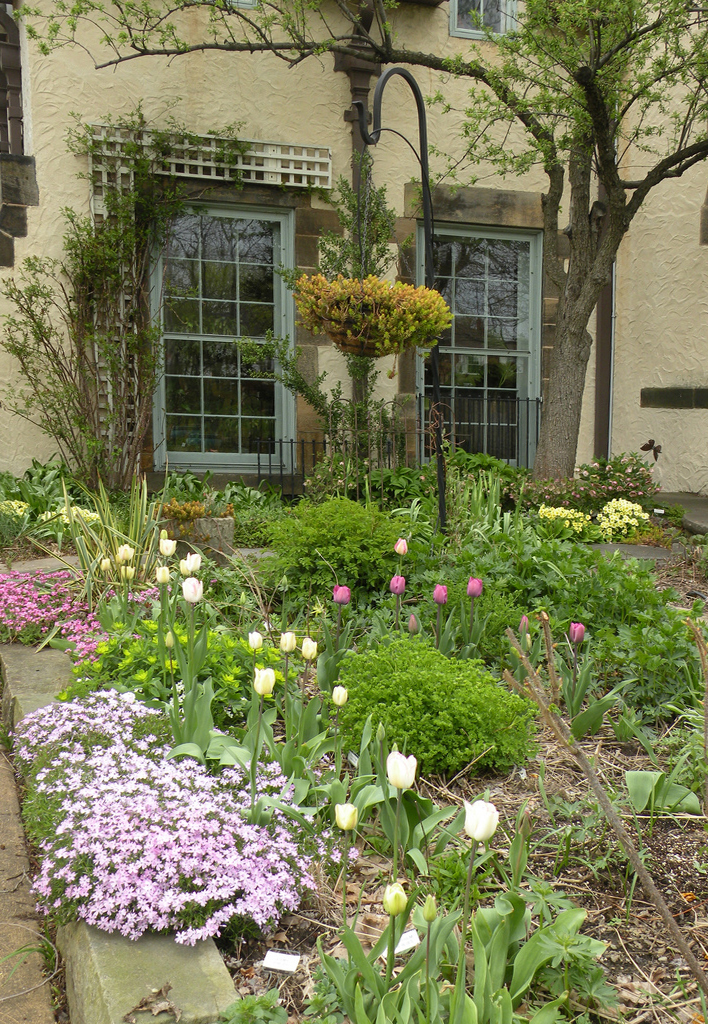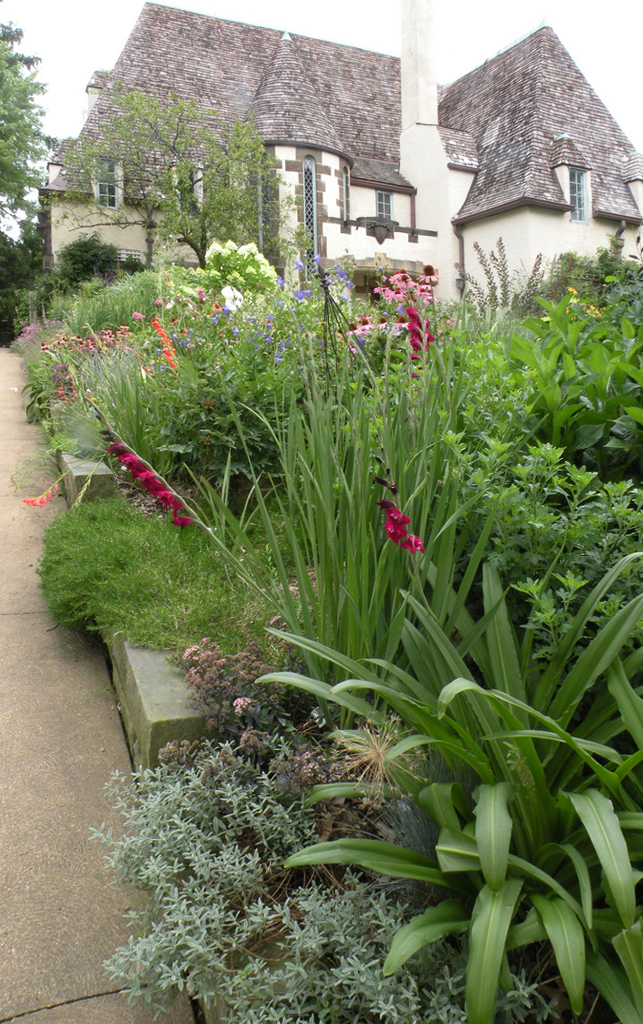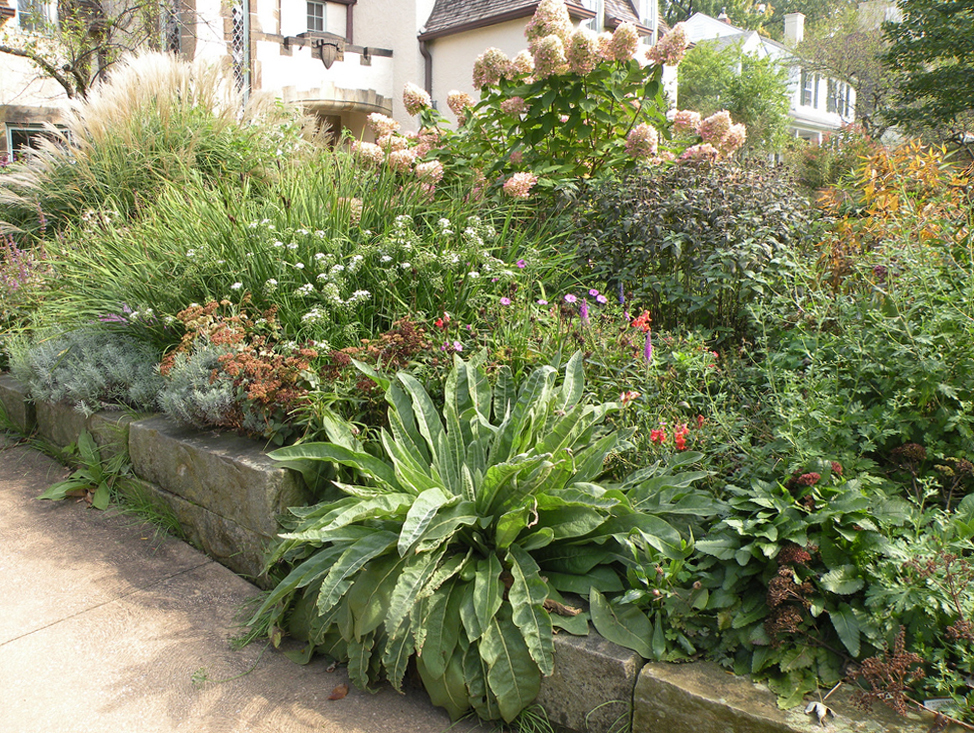Project Details
This suburban garden is an on-going project of twenty-nine years. As a landscape designer, it is my attempt to create a unified landscape that complements our French Norman house while accommodating my obsession with plants, particularly perennials, ornamental grasses, and flowering shrubs. As a plantaholic, I have probably planted and trialed over 1000 perennials, many of which are still living.
When we moved here in 1983, the only flowers (in the back) were some double-flowered orange daylilies and a few peonies. The rest of the landscape was dominated by shrubs pruned into boxes and balls and lots of groundcover. The front bed was very shallow and the beds along both driveways did not exist. Those were installed in 1989.
My first efforts were in the back right hand corner, a bed filled with six inches of white pebbles atop black fabric but also the sunniest area. At that time, the back was shadier but storms over the years have felled some of the large trees.
While perennials and ornamental grasses dominate the landscape, the whole plant palette has been used to lend beauty and year-round interest. There are several microclimates. The front is mostly sunny although the east side is more shaded each year by the Acer ‘Celebration’ and an old crabapple. The back, far west driveway bed is poorly draining heavy clay, part shade and part sun so appropriate woodies have been chosen to give my neighbor and me some privacy while creating habitat for birds and butterflies.
Containers abound, even in the back of the driveway. The emphasis is on color from both flower and foliage and each year I plant perennials in them as well tropicals and unusual annuals.
This garden has every variation of light and moisture with plants chosen for that habitat. Scattered throughout are garden accents such as birdhouses, plaques, decorative containers, and a fountain. Drip irrigation snakes through the beds to minimize evaporation and runoff. Most of it is hidden by a soil-replenishing top dressing of leaf humus or hardwood bark mulch which is laid in alternate years. Leaves and nature’s other debris are never raked out of the beds unless they mat down the plant material but are allowed to decompose in the beds and thus enrich them.































